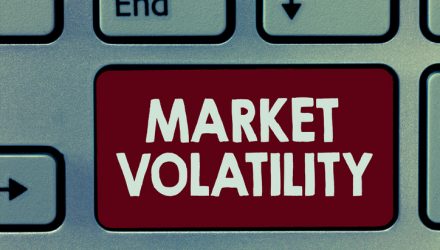ETF Trends spoke with Dan Petersen, director of product management at IndexIQ, about how IQ S&P High Yield Low Volatility Bond ETF (HYLV) has been coming out ahead of other high yield bonds, as of late. It comes as a result of credit risk mitigation.
By default, investors have exposure to credit risk just by entering the high yield realm. IndexIQ’s strategy with HYLV is to search for the 50% that make up the least sensitive bonds to the options-adjusted spread.
“It’s almost like if you were to look at just duration and normal fixed income,” says Petersen. “If you were to be conservative, you would go to the lower duration strategies, and I think that’s what a lot of advisors and investors have done if they were concerned about a rising rates situation.”
The same thing would happen if investors were seeking yield in a market where it is difficult to find yield anywhere. MLPs, real estate, and other venture strategies are often considered for yield, and each come with their own unique risks worth exploring, or one could seek out a high return, but also deal with credit risk. By considering the sensitivity of an attractive yielding bond to changes in the spread, the exposure to credit risk is significantly reduced.
To dampen that down, as opposed to traditional duration, investors must consider spread-duration, which is what HYLV looks at. Ideally, when credit spreads tend to widen, lessen or tighten, the sensitivity for that is not going to impact to the price of HYLV. as it would be lower than other high yielding strategies.
Not Quite A Factor-Based Model
As far as factor-based models go, HYLV doesn’t quite apply, as it is not applied the way it is to the type of factor one would find in equities. That said, looking at the spread duration exposure and taking the whole index and cutting it off at 50% makes it more of a direct screen for sensitivity to the risk that’s apparent in high yield. This is how IndexIQ has derived the low-volatility nature of the strategy.
It’s not about looking at companies that exhibit low volatility or standard deviation. Credit ratings in that area tend to be delayed. Instead, HYLV uses more of a mechanical approach to lower the volatility of the strategy.
Considering how people are mainly looking for yield, and perhaps getting confused because of how the Fed has been moving as of late, HYLV is a way to be able to seek yield without overextending one’s self in terms of risk.
As Petersen states, “We’re always trying to give or provide tools that can mitigate different types of risks, and still achieve the ultimate endgame goal, which might be maximizing yield.”
Related: Attractive Fixed-Income ETF Ideas for a Low Yield Environment
Really, for those who want to maximize yield, HYLV is not going to provide this compared to traditional high yield bonds. However, investors will get the best yield-per-unit-of-risk than anything else that can be found on the market.
For reference, IQ S&P High Yield Low Volatility Bond ETF (HYLV) seeks investment results that track (before fees and expenses) the price and yield performance of the S&P U.S. High Yield Low Volatility Corporate Bond Index (the “Index”). HYLV invests primarily through U.S. dollar-denominated high yield corporate bonds.
For more market trends, visit ETF Trends.

